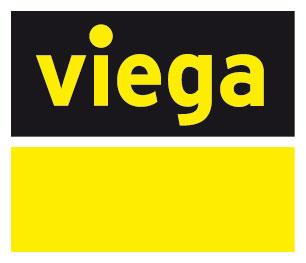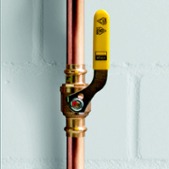Whether you’re a contractor who works in the industrial, commercial or residential space, it’s likely you’ve been on a job site where carbon steel pipe was used. Durable, cost-effective and readily available, this material—also known as black iron pipe—has become an increasingly popular choice in hydronic, gas and a variety of other steel pipe projects.
When securing connections in these piping systems, carbon steel pipe (like other materials) can introduce frustrations and concerns to installers. We’ll use the example of threading, one of the most common ways to join carbon steel pipe in steel pipe projects, to illustrate this.
Joining Carbon Steel Pipe By Threading
Threaded pipes are easily identified by the ridges that appear on their exterior. Formed by a threading machine (with sizes adjusted to the specific pipes), these ridges enable different sections of pipe to screw together and form a complete system.
One of the biggest headaches with this approach is the equipment it requires. Contractors in steel pipe projects may not only find themselves carting around heavy threading machines before work begins, but then moving them at the end of each work day per building requirements. These same machines also require messy oils to ensure that dies, which thread the pipes, are lubricated and won’t overheat. While this extends the lifetime of the dies, it makes for a lengthier cleanup process after the job ends.
Then there’s the potential for inconsistent joints. How tight is tight enough? The uncertainty that surrounds the answer to this question can lead to threaded pipes that are manually screwed too tight. Not only can this cause additional stress on joints, but it can even trigger leaks due to cracks in the fittings. (Because there is no sealing mechanism, PTFE tape or pipe sealant must be applied to pipe threads to help prevent potential leaks.)
Even when all of the right steps are taken, threading still leaves pipe connections at an operational disadvantage. That’s because threading pipe cuts down on the wall thickness of the pipe, which causes the joints to wear faster. Not to mention, threaded pipes also need to be installed starting from one end of the system and this makes repairs much more complicated.
Why Press Technology Is the Better Choice
As steel pipe projects continue to evolve, the need for a faster, more sophisticated alternative to threading carbon steel pipe has become clear. This has led many industry leaders to turn to press technology—and they like the results they see.
Press technology significantly streamlines the joining of carbon steel pipe at every stage of the process. Rather than relying on cumbersome, inconvenient machines, contractors can simply use a single portable press tool to quickly and properly install fittings of various sizes, with no messy oils required.
In the video below, you’ll get a chance to see the speed of press technology, with connections made in matter of seconds, as well as learn about some of the applications where it’s useful.
In addition to the convenience and speed of their installation, press fittings also deliver the added benefit of more secure connections. That’s because they eliminate the room for error that comes with manual tightening and instead rely on state-of-the-art technology to ensure a consistent and proper fit. Whereas it can take a bit of experience to become proficient with a pipe threading machine, press fittings allow new and skilled workers alike to make the same quality connection and reduce the potential for future maintenance and repairs.
At Viega, we engineer and manufacture innovative press technology for a variety of materials, including carbon steel pipe. To learn more about our piping products and see them in action, visit our project profiles.









